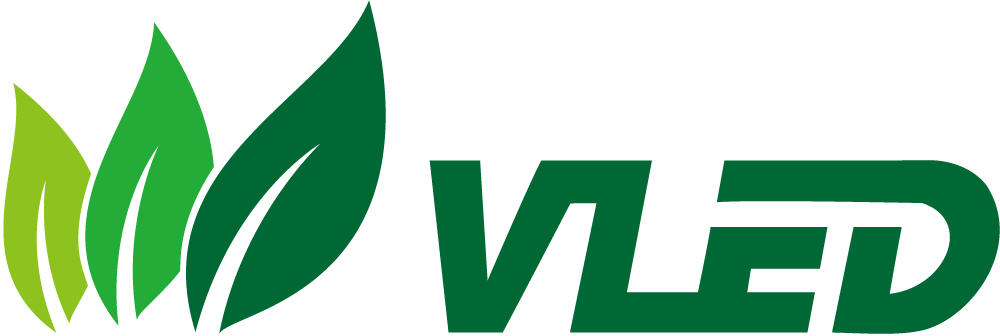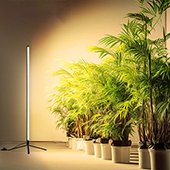Menu
Can LED Grow Lights Burn Plants?
You may have noticed that high-tech LED plant lighting devices have become increasingly common in vegetable greenhouses, indoor farms, and even potted plants on home balconies. Why? This is mainly due to the unique advantages of LED grow lights.
LED plant lights act like a master in precisely controlling the spectrum, providing plants with “customized sunlight” that is best for their growth and development. Especially in the absence of natural sunlight, they can simulate the most suitable light environment, accelerate plant growth, increase yield, and have unparalleled advantages in space utilization.
However, some friends might have a lingering concern: since these lights are so powerful and concentrated, could they end up burning my small green plants? Excessive light can be stressful for any living organism, much like how humans can’t stare directly at intense sunlight for extended periods.
Will LED grow lights cause plant damage resembling burns? That’s the core question we’re exploring today! Let’s unravel this mystery together, ensuring that technology serves green living better and doesn’t become a source of unintended harm.
Table of Contents
The Possibility of LED Grow Light Causing Plant Burns
LED plant lights are a potential threat to agricultural production; instead, they are essential tools for achieving efficient, environmentally friendly, and sustainable cultivation.
Let’s talk about the issue of excessive light exposure.
If plants had human sensations, prolonged exposure to high-intensity LED lighting would be like subjecting them to sunbathing under scorching sunlight. It’s akin to us getting sunburned during intense summer sun exposure, where heat accumulates.
While LEDs dissipate less heat compared to traditional light sources, prolonged and intense exposure can still lead to issues for plant leaves, similar to how our skin can’t endure prolonged exposure to heat waves, resulting in rapid water evaporation and leaf scorching, ultimately affecting physiological functions.
Don’t forget to control the contact time between LED lights and plants. Maintaining an appropriate distance can significantly reduce the damage caused by the heat effects.
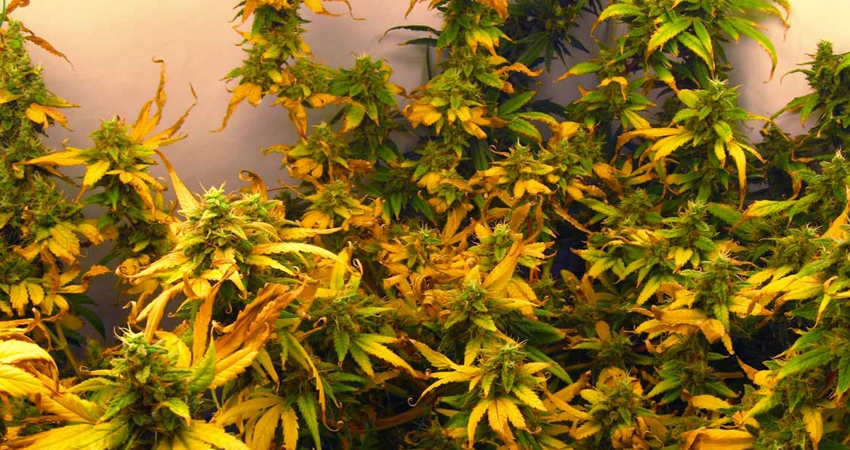
Next, the spectral imbalance is another factor that cannot be ignored.
The way plants respond to light is similar to our taste preferences when choosing food. Some plants prefer red light, like an “energy drink,” which helps them thrive and bloom brightly. Others favor blue light, akin to a “growth coffee,” promoting lush stems and leaves.
Providing them with an LED light source with inappropriate wavelengths is like feeding them indigestible food. It fails to provide effective energy but may also disrupt cell structures, hindering normal growth and development.
Choosing a spectrum that matches the plant’s characteristics and combining it with an appropriate light distance is crucial to harness the maximum benefits of LED lighting.

Let’s talk about personalized needs. Each plant has its preferences for light and adaptation periods.
Some plants, like desert cacti, can withstand direct sunlight, while others, like forest spirits, prefer shade. Different types of plants and their light requirements vary significantly at various growth stages.
Moreover, from the seedling stage to growth, flowering, and fruiting, plants have changing demands for light conditions. For instance, some succulents can bask in sunlight, but the same light intensity might be too much for shade-loving ferns.
Understanding these individual preferences and adjusting light conditions accordingly is crucial, ensuring that each plant, at different growth stages, receives the optimal light it needs.
When using LED grow lights, we need to be as considerate as caring for our children. Flexibly adjust the lighting strategy with the plant’s growth stages, preventing light from unintentionally harming the plants. Instead, let’s make sure it genuinely helps them grow healthily.
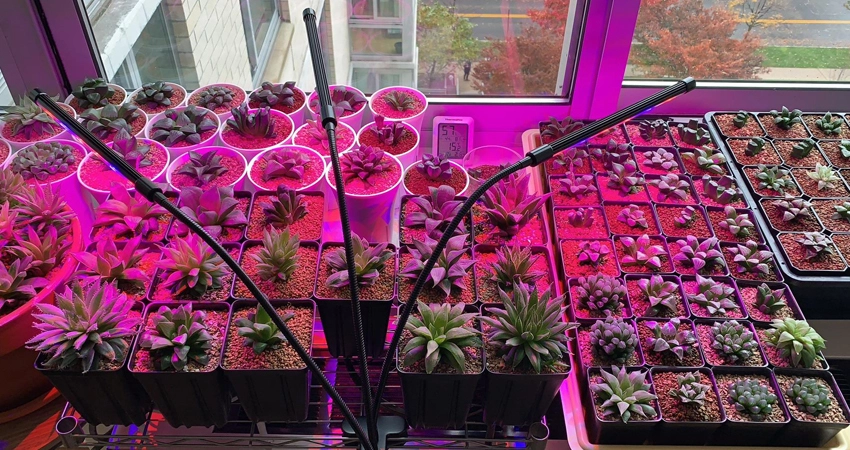
Finally, the distance between the light fixture and the plants is a crucial factor in determining the effectiveness of illumination.
This not only involves the degree of light intensity reduction but also directly affects the distribution of heat generated by the light. Generally, plants closer to the light fixture receive higher light intensity, and at the same time, heat accumulation becomes more noticeable.
By appropriately setting the distance between LED plant lights and plants, we can ensure sufficient light intensity to support photosynthesis while avoiding heat damage caused by being too close. This helps achieve a scientifically efficient indoor growing environment.
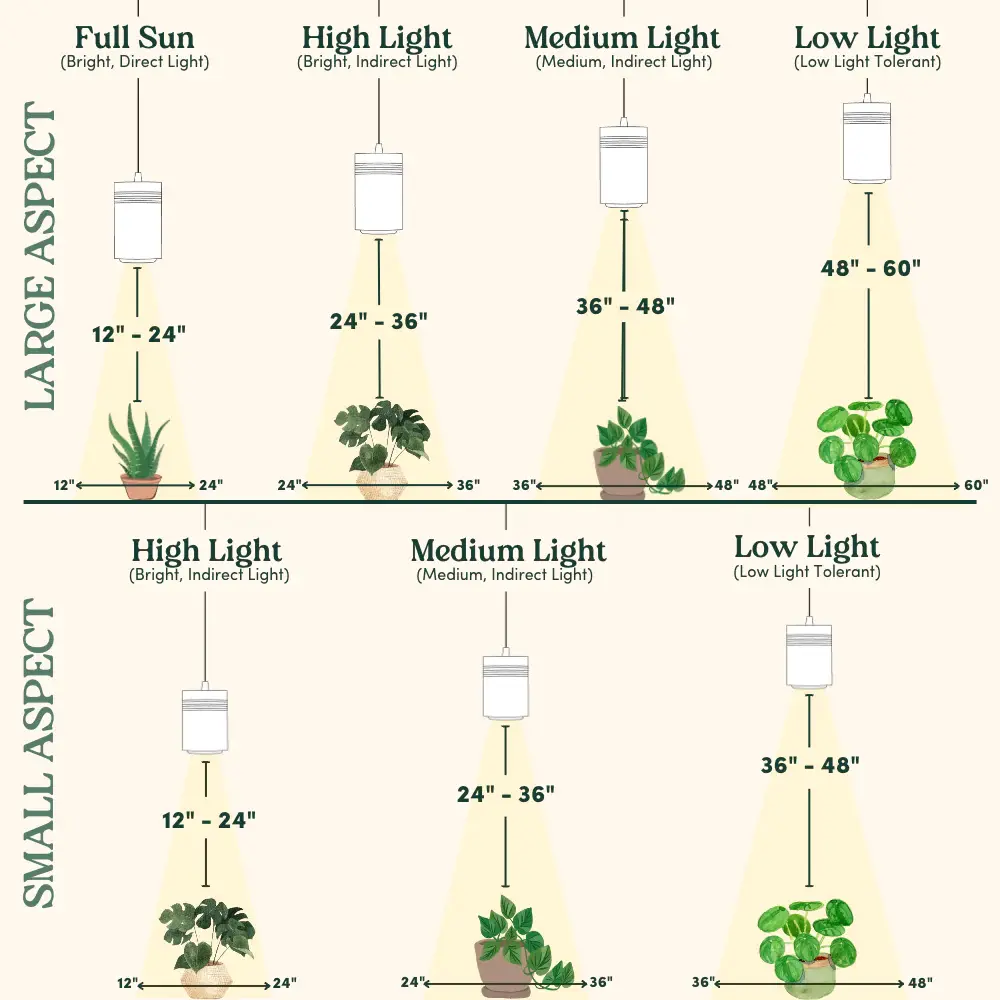
Case Study
Netherlands – Philips GrowWise Center
Location: Eindhoven, Netherlands
Crops: Strawberries, aromatic plants, and other economic crops
Located in Eindhoven, the Philips GrowWise research center utilizes their in-house developed LED lighting solution, such as the Philips GreenPower LED top-light module, to provide customized lighting schemes for different stages of strawberry plants.
Through an intelligent control system, researchers can monitor and adjust lighting parameters in real time, ensuring that plants receive appropriate light intensity and spectrum. This system effectively prevents leaf burns caused by high temperatures.
As a result, strawberries can achieve rapid and healthy growth in an ideal environment, significantly increasing both yield and fruit quality.
Location: Newark, New Jersey, USA
Crops: Kale, spinach, and other leafy green vegetables
AeroFarms utilizes advanced indoor farming technology and installs precisely controlled LED plant lights in a multi-layer vertical cultivation system.
The carefully designed lighting scheme caters to the specific needs of each vegetable, providing the optimal light environment. By accurately adjusting spectrum components and illumination duration, AeroFarms not only accelerates plant growth but also effectively prevents plant burns caused by excessive exposure.
As a result, they continuously produce healthy and high-quality green vegetables throughout the year, thanks to uninterrupted cultivation in all seasons.
Strategies to Prevent Plant Burns from LED Grow Lights
1. Customized Spectrum Solutions: Choose appropriate LED spectrum combinations tailored to different plants and growth stages.
For instance, during the sprouting stage of lettuce and spinach, increasing the proportion of blue light can promote stem and leaf growth. On the other hand, for flowering tomatoes or flowers like morning glories, enhancing the red light component stimulates flower development and fruiting.
This is akin to selecting suitable nutritional supplements based on a baby’s age, ensuring that each plant receives the most suitable “photosynthesis supply.”
Our cannabis cultivation clients request the incorporation of ultraviolet and red light in the light spectrum to stimulate the aroma and flower development of the cannabis plants.
If you require custom services, whether in terms of spectrum or appearance, we can tailor our products to meet your specific needs. As a professional LED grow light manufacturer, we have the expertise to fulfill the tasks you entrust to us.
2. Precise Control of Light Intensity and Duration: Each plant has unique light requirements.
- For instance, among several common plants in a greenhouse environment:
- Tomato plants during their vigorous growth phase can tolerate 14-16 hours of light per day. However, the light intensity should not be too high, typically recommended to maintain a Photosynthetic Photon Flux Density (PPFD) between 300-500 μmol/m²·s.
- Strawberry seedlings in the early stages can have shorter light durations, around 12-14 hours, and should maintain an appropriate PPFD between 200-300 μmol/m²·s.
- Cucumbers typically require around 8 hours of light per day, with a PPFD ranging from 500 to 1000 μmol/m²·s.
- For short-day flowering plants like chrysanthemums, it’s essential to regulate daily light exposure to not exceed 12 hours to successfully induce flower bud differentiation.
- Sensitivity varies among certain seedlings or herbaceous plants, and suitable light intensity may only require 100 to 200 μmol/m²·s. Adjusting the light conditions appropriately is crucial for their healthy development.
However, with changing seasons and variations in indoor environments, it’s important to monitor and adjust lighting schemes in real time. This helps avoid excessive exposure that could lead to heat damage on plant leaves while ensuring sufficient light to meet their growth and developmental needs.
3. Real-time Monitoring and Dynamic Adjustment of Lighting Schemes.
Just as monitoring a child’s growth process and adjusting educational methods accordingly is crucial, the real-time monitoring of plant growth is equally important.
Observing indicators such as leaf color, changes in morphology, and overall growth rate can provide intuitive feedback on whether the lighting conditions are suitable.
For instance, if lettuce leaves show yellowing, it could indicate insufficient light or a mismatched light spectrum. On the other hand, if there are signs of scorched edges or burn marks on the leaves, it might suggest that the light intensity is too high or the exposure time is too long.
For different common greenhouse crops, such as cucumbers, if the vines are too thin and weak, and the leaves appear pale green, it might be necessary to increase the lighting duration and intensity appropriately.
For succulent plants, if they still elongate despite having sufficient blue light, try reducing the duration of light exposure or adjusting the red-light ratio to promote a more compact growth form.
In summary, in practical operations, it’s essential to regularly inspect and record the growth status of plants. Based on this information, timely adjustments to the lighting scheme should be made.
Conclusion
When used correctly, LED grow lights not only avoid turning into plant ovens but instead become super assistants for robust plant growth.
Just like providing a balanced nutritional meal for plant babies, precise control of light intensity, duration, and spectrum, along with maintaining an appropriate distance between the light fixtures, is crucial to prevent plant burns.
Scientific and rational use of LED plant lights is, in fact, a form of art in modern agricultural cultivation.
Through such meticulous management, not only can we effectively prevent plant damage from improper lighting, but we can also significantly enhance production efficiency and crop quality.
In cold winters or areas with insufficient natural sunlight, LED lights become the saviors for green life yearning for sunshine. They assist plants in thriving and growing abundantly in places where it would otherwise be impossible.
Now, you should know that LED grow lights are far from being a potential threat to agricultural production; instead, they are crucial tools for achieving efficient, environmentally friendly, and sustainable cultivation.
Only by deeply understanding and flexibly applying these high-tech methods can we truly appreciate the transformative significance that LED technology brings to modern agriculture. This allows every plant to flourish in an environment that is best suited for its growth, thanks to the advancements in lighting technology.
Get in touch with us!
From custom light planning, to tailored quotes, and everything in between, our team of horticulture experts are always ready to assist.
